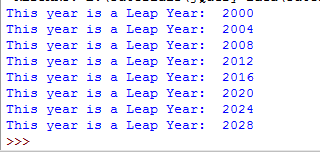

Python not equal how to#
Now let us see how to use it with the if-else statement. For example, defining the function and writing its functionality later. This statement is generally used when you do not want to write any part of the code. When the interpreter reads this, it performs no operation. In such situations, you can use the pass statement.
Python not equal code#
You may face a situation when you want to use an if-else statement, but don’t want to execute any code inside the if or else block. Read: Get index Pandas Python Python if not do nothing Raise an error if the element is not in listĪs you can see in the output, an exception is raised when the supplied value is not found in the list. The entered alphabet is compared with the vowels in the list and the result is returned accordingly. I have defined a list to store all the vowels.The above program will take an alphabet as an input and return the output telling if the entered alphabet is a vowel or a consonant.Print('The entered alphabet is a consonant')

You can use the “ not in” operator for the list to check if an item is present in a list or not.įor example, look at the Python code below: list1= In this section, I will explain how you can check if an item is stored in a list or not in Python. Print('The number is even') Python if not in list If you want to use the not operator with if-else, the above becomes: number = int(input('Enter a number: ')) In this way, you can use the not equal to operator to compare the integers. As a result, the False part of the if-else statement is executed. The “ if variable is not None” statement is equivalent to boolean False. I have used “ is not” to check if the variable contains a None value or not. In the above code, we are comparing the variable with the None value. So we have to check if a variable contains a None value or not. In Python, there is None instead of Null.
Python not equal download zip#
Therefore, when I executed the above program and didn’t give any input, the True part of the if-else statement worked.Īnd when I executed the program again with a user input, the False part of the if-else statement worked.Īlso, check: Download zip file from URL using python Python if not equal to null This operator works on the same principle as the operator just explained.In the above example, if the variable is empty, it will satisfy the If-not statement and the True part of the statement will get executed. To overcome this kind of problem, it is possible to caste your variable to Integer so that you can perform the comparison. The not equal operator considers that their values are not identical, so it returns True. Here we try to compare the values of two different types. Since the two values are different, the not equal operator returns True. In our second case, variable A has the value 10 and variable C has the value 20. Since the two values are identical, the not equal operator returns False. In our first case, variable A has a value of 10 and variable B also has a value of 10. In the following example, we will test different cases to illustrate how the not equal operator works: I rather recommend using the “!=” operator but it is important to know that the other operator exists in case you find this syntax in a code. There are two operators that allow you to do this operator in python : OperatorĪvailable in python 3, but deprecated in python 3.x for example the integer 5 is not equal to the string “5”. NOTE : Python is a dynamic and highly typed language, i.e. This operator returns the value True if the two variables compared are of the same type and have different values, if the values of the two variables are identical, it returns False. In Python, not equal is a comparison operator that compares whether two variables are not equal.

In this article, we will focus on the python operator “not equal”. This is one of the most fundamental concepts. Python Not Equal Operator: In programming, operatorsare essential to compare the values of the variables with each other.


 0 kommentar(er)
0 kommentar(er)
